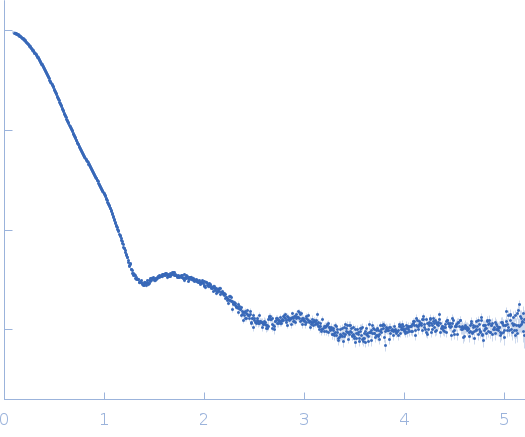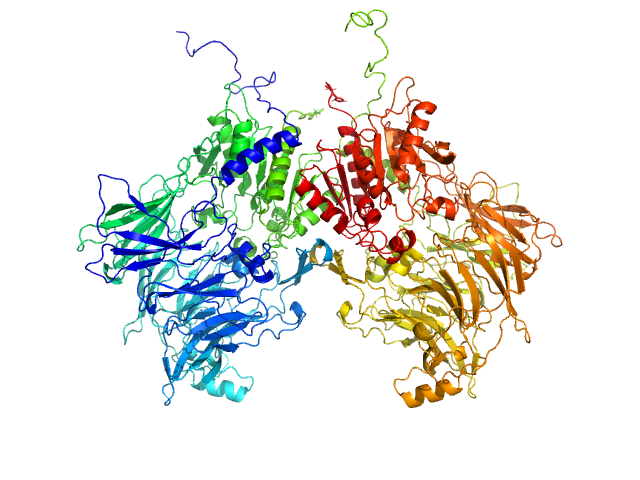|
Synchrotron SAXS data from solutions of DPP9 with compound 42 in 25 mM HEPES, 150 mM NaCl, 2 mM DTT, pH 7.5 were collected on the BM29 beam line at the ESRF (Grenoble, France) using a Pilatus3 2M detector at a sample-detector distance of 2.9 m and at a wavelength of λ = 0.103 nm (I(s) vs s, where s = 4πsinθ/λ, and 2θ is the scattering angle). In-line size-exclusion chromatography (SEC) SAS was employed. The SEC parameters were as follows: A 50.00 μl sample at 12 mg/ml was injected at a 0.20 ml/min flow rate onto a Shodex KW404-4F column at 20°C. 750 successive 2 second frames were collected. The data were normalized to the intensity of the transmitted beam and radially averaged; the scattering of the solvent-blank was subtracted.
|
|
 s, nm-1
s, nm-1
